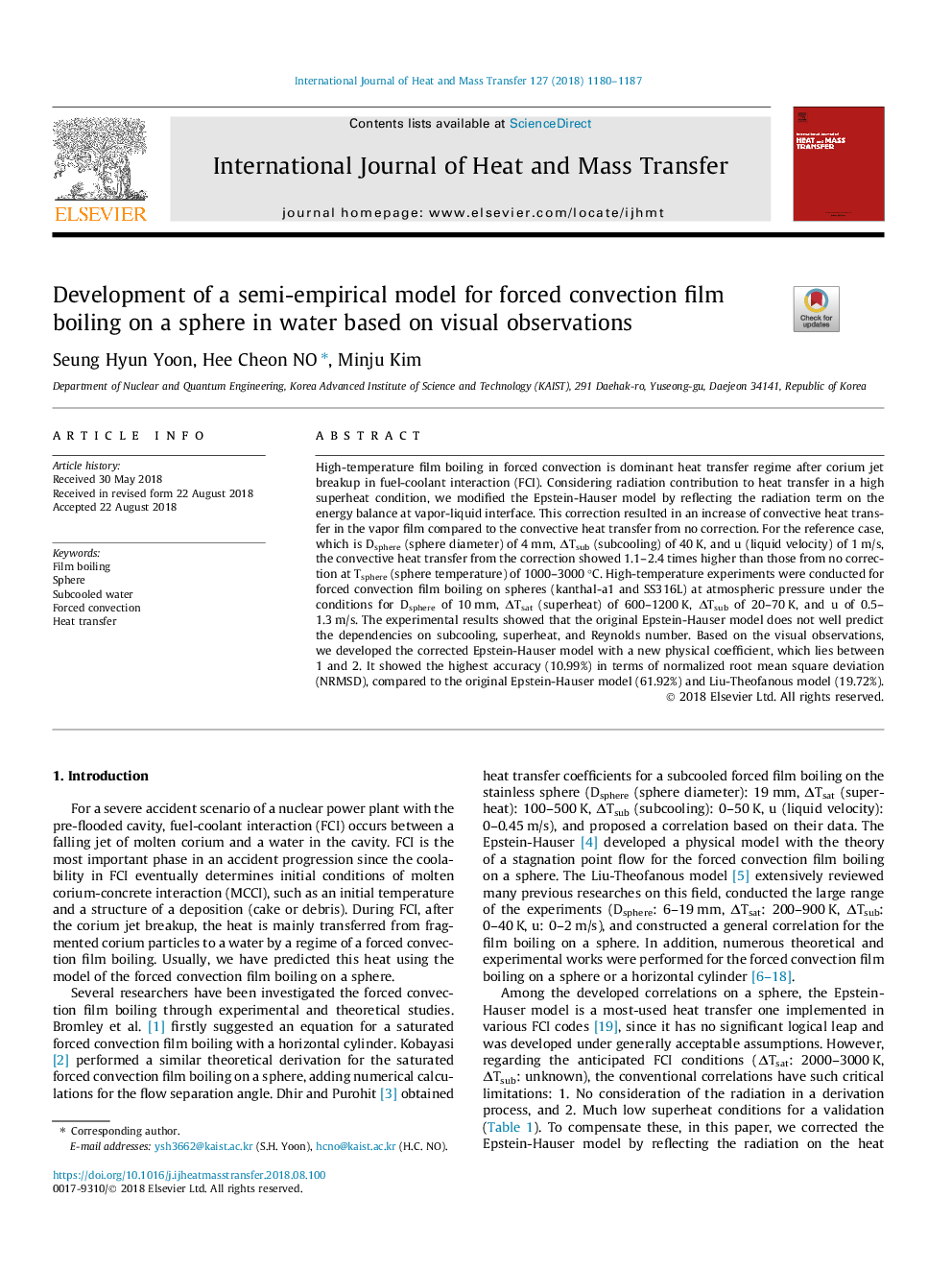| Article ID | Journal | Published Year | Pages | File Type |
|---|---|---|---|---|
| 10127434 | International Journal of Heat and Mass Transfer | 2018 | 8 Pages |
Abstract
High-temperature film boiling in forced convection is dominant heat transfer regime after corium jet breakup in fuel-coolant interaction (FCI). Considering radiation contribution to heat transfer in a high superheat condition, we modified the Epstein-Hauser model by reflecting the radiation term on the energy balance at vapor-liquid interface. This correction resulted in an increase of convective heat transfer in the vapor film compared to the convective heat transfer from no correction. For the reference case, which is Dsphere (sphere diameter) of 4â¯mm, ÎTsub (subcooling) of 40â¯K, and u (liquid velocity) of 1â¯m/s, the convective heat transfer from the correction showed 1.1-2.4 times higher than those from no correction at Tsphere (sphere temperature) of 1000-3000â¯Â°C. High-temperature experiments were conducted for forced convection film boiling on spheres (kanthal-a1 and SS316L) at atmospheric pressure under the conditions for Dsphere of 10â¯mm, ÎTsat (superheat) of 600-1200â¯K, ÎTsub of 20-70â¯K, and u of 0.5-1.3â¯m/s. The experimental results showed that the original Epstein-Hauser model does not well predict the dependencies on subcooling, superheat, and Reynolds number. Based on the visual observations, we developed the corrected Epstein-Hauser model with a new physical coefficient, which lies between 1 and 2. It showed the highest accuracy (10.99%) in terms of normalized root mean square deviation (NRMSD), compared to the original Epstein-Hauser model (61.92%) and Liu-Theofanous model (19.72%).
Related Topics
Physical Sciences and Engineering
Chemical Engineering
Fluid Flow and Transfer Processes
Authors
Seung Hyun Yoon, Hee Cheon NO, Minju Kim,
